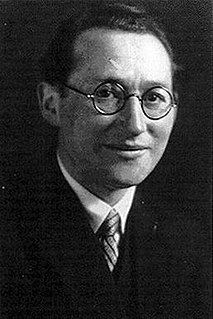Related Research Articles

Negotiation is a dialogue between two or more people or parties to reach a desired outcome regarding one or more issues of conflict. It is an interaction between entities who aspire to agree on matters of mutual interest. The agreement can be beneficial for all or some of the parties involved. The negotiators should establish their own needs and wants while also seeking to understand the wants and needs of others involved to increase their chances of closing deals, avoiding conflicts, forming relationships with other parties, or maximizing mutual gains.

In economics and business decision-making, a sunk cost is a cost that has already been incurred and cannot be recovered. Sunk costs are contrasted with prospective costs, which are future costs that may be avoided if action is taken. In other words, a sunk cost is a sum paid in the past that is no longer relevant to decisions about the future. Even though economists argue that sunk costs are no longer relevant to future rational decision-making, people in everyday life often take previous expenditures in situations, such as repairing a car or house, into their future decisions regarding those properties.
Group dynamics is a system of behaviors and psychological processes occurring within a social group, or between social groups. The study of group dynamics can be useful in understanding decision-making behaviour, tracking the spread of diseases in society, creating effective therapy techniques, and following the emergence and popularity of new ideas and technologies. These applications of the field are studied in psychology, sociology, anthropology, political science, epidemiology, education, social work, leadership studies, business and managerial studies, as well as communication studies.
The concept of interpersonal relationship involves social associations, connections, or affiliations between two or more people. Interpersonal relationships vary in their degree of intimacy or self-disclosure, but also in their duration, in their reciprocity and in their power distribution, to name only a few dimensions. The context can vary from family or kinship relations, friendship, marriage, relations with associates, work, clubs, neighborhoods, and places of worship. Relationships may be regulated by law, custom, or mutual agreement, and form the basis of social groups and of society as a whole. Interpersonal relationships are created by people's interactions with one another in social situations.
Eric Lansdown Trist was an English scientist and leading figure in the field of organizational development (OD). He was one of the founders of the Tavistock Institute for Social Research in London.

Social exchange theory is a sociological and psychological theory that studies the social behavior in the interaction of two parties that implement a cost-benefit analysis to determine risks and benefits. The theory also involves economic relationships—the cost-benefit analysis occurs when each party has goods that the other parties value. Social exchange theory suggests that these calculations occur in romantic relationships, friendships, professional relationships, and ephemeral relationships as simple as exchanging words with a customer at the cash register. Social exchange theory says that if the costs of the relationship are higher than the rewards, such as if a lot of effort or money were put into a relationship and not reciprocated, then the relationship may be terminated or abandoned.
Escalation of commitment is a human behavior pattern in which an individual or group facing increasingly negative outcomes from a decision, action, or investment nevertheless continue the behavior instead of altering course. The actor maintains behaviors that are irrational, but align with previous decisions and actions.

Kurt Lewin was a German-American psychologist, known as one of the modern pioneers of social, organizational, and applied psychology in the United States. During his professional career Lewin applied himself to three general topics: applied research, action research, and group communication.
Ambivalence is a state of having simultaneous conflicting reactions, beliefs, or feelings towards some object. Stated another way, ambivalence is the experience of having an attitude towards someone or something that contains both positively and negatively valenced components. The term also refers to situations where "mixed feelings" of a more general sort are experienced, or where a person experiences uncertainty or indecisiveness.
Group emotion refers to the moods, emotions and dispositional affects of a group of people. It can be seen as either an emotional entity influencing individual members' emotional states or the sum of the individuals' emotional states.
One way of thinking holds that the mental process of decision-making is rational: a formal process based on optimizing utility. Rational thinking and decision-making does not leave much room for emotions. In fact, emotions are often considered irrational occurrences that may distort reasoning.
Valence, or hedonic tone, is the affective quality referring to the intrinsic attractiveness/"good"-ness or averseness/"bad"-ness of an event, object, or situation. The term also characterizes and categorizes specific emotions. For example, emotions popularly referred to as "negative", such as anger and fear, have negative valence. Joy has positive valence. Positively valenced emotions are evoked by positively valenced events, objects, or situations. The term is also used to describe the hedonic tone of feelings, affect, certain behaviors, goal attainment or nonattainment, and conformity with or violation of norms. Ambivalence can be viewed as conflict between positive and negative valence-carriers.
Field theory is a psychological theory which examines patterns of interaction between the individual and the total field, or environment. The concept first made its appearance in psychology with roots to the holistic perspective of Gestalt theories. It was developed by Kurt Lewin, a Gestalt psychologist, in the 1940s.
Job performance assesses whether a person performs a job well. Job performance, studied academically as part of industrial and organizational psychology, also forms a part of human resources management. Performance is an important criterion for organizational outcomes and success. John P. Campbell describes job performance as an individual-level variable, or something a single person does. This differentiates it from more encompassing constructs such as organizational performance or national performance, which are higher-level variables.
The self-discrepancy theory states that individuals compare their "actual" self to internalized standards or the "ideal/ought self". Inconsistencies between "actual", "ideal" and "ought" are associated with emotional discomforts. Self-discrepancy is the gap between two of these self-representations that leads to negative emotions.
In psychology, avoidance coping is a coping mechanism and form of experiential avoidance. It is characterized by a person's efforts, conscious or unconscious, to avoid dealing with a stressor in order to protect oneself from the difficulties the stressor presents. Avoidance coping can lead to substance abuse, social withdrawal, and other forms of escapism. High levels of avoidance behaviors may lead to a diagnosis of avoidant personality disorder, though not everyone who displays such behaviors meets the definition of having this disorder. Avoidance coping is also a symptom of post-traumatic stress disorder and related to symptoms of depression and anxiety. Additionally, avoidance coping is part of the approach-avoidance conflict theory introduced by psychologist Kurt Lewin.
Experiential avoidance (EA) has been broadly defined as attempts to avoid thoughts, feelings, memories, physical sensations, and other internal experiences—even when doing so creates harm in the long run. The process of EA is thought to be maintained through negative reinforcement—that is, short-term relief of discomfort is achieved through avoidance, thereby increasing the likelihood that the avoidance behavior will persist. Importantly, the current conceptualization of EA suggests that it is not negative thoughts, emotions, and sensations that are problematic, but how one responds to them that can cause difficulties. In particular, a habitual and persistent unwillingness to experience uncomfortable thoughts and feelings is thought to be linked to a wide range of problems.
Stigma management is the process of concealing or disclosing aspects of one's identity to minimize social stigma.
Interdependence theory is a social exchange theory that states that interpersonal relationships are defined through interpersonal interdependence, which is "the process by which interacting people influence one another's experiences"(Van Lange & Balliet, 2014, p. 65). The most basic principle of the theory is encapsulated in the equation I = ƒ[A, B, S], which says that all interpersonal interactions (I) are a function (ƒ) of the given situation (S), plus the actions and characteristics of the individuals in the interaction. The theory's four basic assumptions are 1) The Principle of Structure, 2) The Principle of Transformation, 3) The Principle of Interaction, and 4) The Principle of Adaption.
Objective self-awareness is attention focused on the self as a socially evaluable object, as defined by Shelley Duval, Robert Wicklund, and other contemporary social psychologists.
References
- ↑ Allport, G. W. (1948). "The Genius of Kurt Lewin". Journal of Social Issues. The Society for the Psychological Study of Social Issues. 4 (S1): 14–21. doi:10.1111/j.1540-4560.1948.tb01792.x.
- ↑ Lewin, K. (1935). A Dynamic Theory of Personality. New York: McGraw-Hill. ISBN 978-0070374515.
- ↑ Miller, N. E. (1944). "Personality and the behavior disorders". In J.M. Hunt (ed.). Experimental Studies of Conflict. Vol. 1. New York: Ronald.
- ↑ Miller, N. E. (1959). "Liberalization of basic S-R concepts: Extension to conflict behavior, motivation, and social learning". In S. Koch (ed.). Psychology: A study of science. Vol. 2. New York: McGraw-Hill.
- ↑ O'Neil, EB; Newsome, RN; Li, IH; Thavabalasingam, S; Ito, R; Lee, AC (11 November 2015). "Examining the Role of the Human Hippocampus in Approach-Avoidance Decision Making Using a Novel Conflict Paradigm and Multivariate Functional Magnetic Resonance Imaging". The Journal of Neuroscience. 35 (45): 15039–49. doi:10.1523/JNEUROSCI.1915-15.2015. PMC 6605357 . PMID 26558775.
- ↑ Boyd, R.L.; Robinson, M. D. & Fetterman, A. K. (2011). "Miller (1944) revisited: Movement times in relation to approach and avoidance conflicts". Journal of Experimental Social Psychology. 47 (6): 1192–1197. doi:10.1016/j.jesp.2011.04.017.